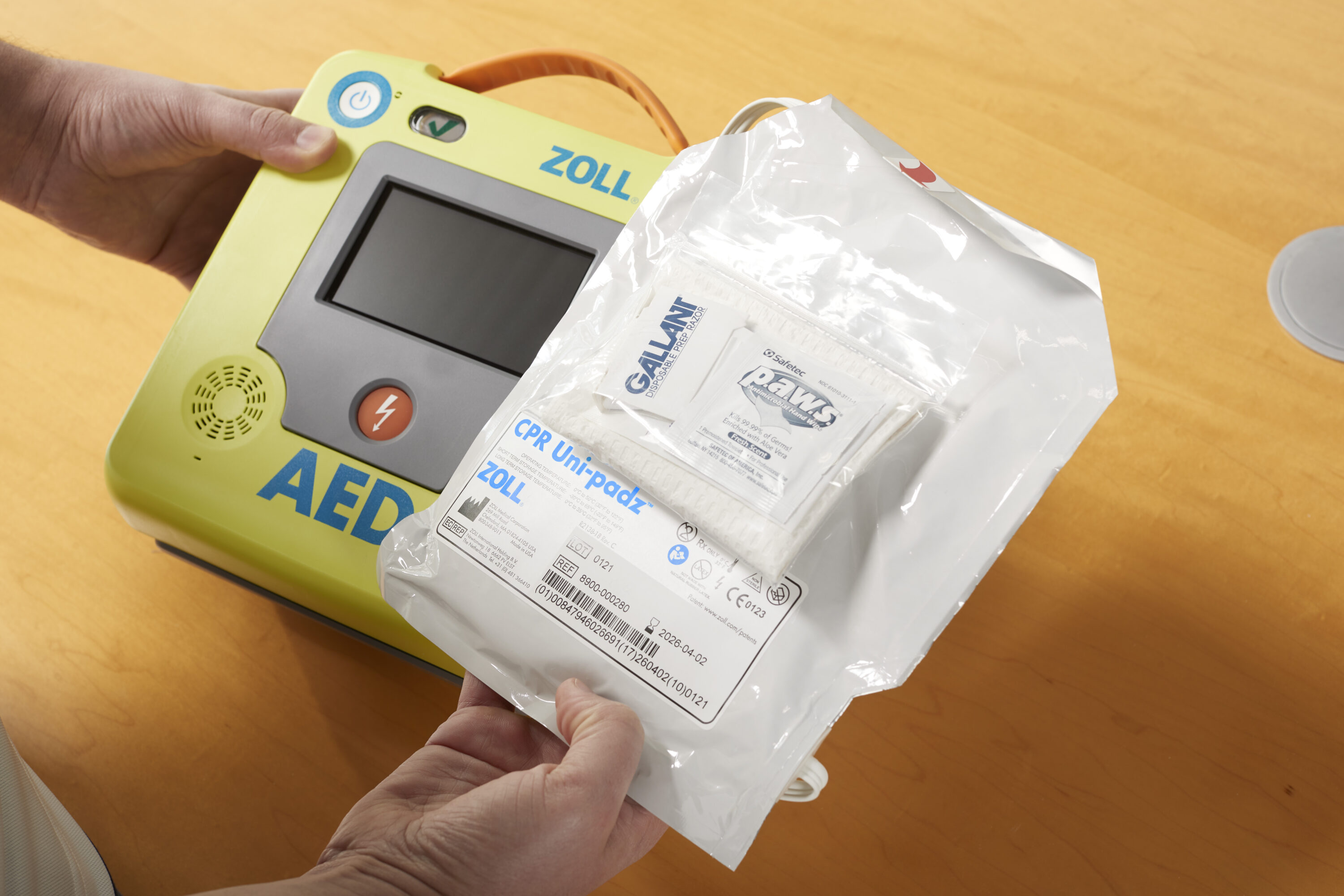
La manutenzione periodica dei defibrillatori è obbligatoria? Scopriamolo
In Italia, la corretta manutenzione dei defibrillatori semiautomatici esterni (DAE) è fondamentale per garantirne l’efficienza e la sicurezza. Tuttavia, è necessario chiarire alcune informazioni errate che circolano riguardo a questi dispositivi salvavita.
I DAE sono dispositivi elettromedicali
I DAE sono classificati come dispositivi elettromedicali. Questo è significativo perché, secondo il Regolamento sui Dispositivi Medici (MDR), tutti i DAE sono stati portati in Classe III. Questa classificazione sottolinea l’importanza della conformità normativa e dei corretti protocolli di manutenzione.
Verifiche semplificate di sicurezza elettrica
Sebbene i DAE siano dispositivi elettromedicali, sono classificati come dispositivi ad esclusiva alimentazione interna, visto che non hanno la possibilità di essere collegati alla rete elettrica a 220V. Questo semplifica le verifiche di sicurezza elettrica rispetto ai dispositivi che richiedono alimentazione dalla rete. Queste verifiche sono meno complesse e generalmente più facili da eseguire.
Verifiche funzionali vs. verifiche di sicurezza elettrica
Spesso c’è confusione tra le verifiche funzionali (anche chiamate manutenzione ordinaria) e le verifiche di sicurezza elettrica. Le verifiche funzionali vanno eseguite secondo il programma raccomandato dal fabbricante, mentre la specifica su come eseguire le verifiche di sicurezza elettrica non rientra nelle competenze del fabbricante, in quanto quest’ultime sono regolate da normative internazionali, nazionali e talvolta locali.
Per quanto riguarda la manutenzione ordinaria, secondo le indicazioni del fabbricante sia AED 3 che AED Plus di ZOLL non necessitano di controlli aggiuntivi oltre ai test settimanali che eseguono automaticamente. Il proprietario deve solo controllare periodicamente l’indicatore di stato e la data di scadenza degli elettrodi (solo AED 3 connesso a CPR UniPadz esegue quest’ultimo controllo automaticamente).
Conformità alla MDR per la manutenzione
Secondo l’MDR, i clienti devono eseguire manutenzione ordinaria sui DAE attenendosi come minimo alle indicazioni del fabbricante. Se un cliente sceglie di effettuare manutenzioni più frequenti, sia per protocolli interni sia per regolamenti locali, queste azioni sono al di fuori delle raccomandazioni del fabbricante e sono responsabilità del cliente.
Chi può eseguire la manutenzione ordinaria?
L’MDR richiede di seguire le raccomandazioni del fabbricante. Per i dispositivi ZOLL, ciò significa che qualsiasi verifica funzionale deve essere eseguita da personale formato e autorizzato da ZOLL. Se la manutenzione è eseguita da terzi non autorizzati, sia il cliente sia il fornitore del servizio si assumono la responsabilità per eventuali problemi, non il fabbricante.
Verifiche di Sicurezza Elettrica (VSE)
ZOLL non specifica la necessità o la frequenza delle verifiche di sicurezza elettrica (VSE). Questo è regolato da norme come la CEI, che richiedono che tutti i dispositivi elettromedicali siano sottoposti a controlli di sicurezza elettrica almeno una volta all’anno. Per i dispositivi alimentati internamente come i DAE, queste verifiche sono semplici e consistono principalmente nel verificare che non ci siano dispersioni di corrente sulla scocca del dispositivo o sulle parti applicate.
Chi può eseguire le verifiche di sicurezza elettrica?
Qualsiasi tecnico certificato può eseguire le VSE, purché possegga le qualifiche necessarie. In Italia, ciò spesso significa essere iscritti a un albo specifico.
Manutenzione ordinaria vs. verifiche di sicurezza elettrica
È importante notare che la manutenzione ordinaria e le VSE sono attività distinte. Le VSE possono far parte di un protocollo di manutenzione ordinaria, ma la manutenzione ordinaria si riferisce generalmente alle verifiche funzionali specificate dal fabbricante.
Conclusione
La manutenzione dei defibrillatori è cruciale per la loro efficacia, ma è essenziale affidarsi a servizi autorizzati e seguire le indicazioni dei fabbricanti per evitare interventi non necessari e mantenere la garanzia del prodotto. Non fatevi ingannare da false economie: scegliere un DAE di qualità e rispettare le indicazioni del fabbricante è la scelta migliore per garantire la sicurezza e salvare vite nel momento decisivo.
Scopri la nostra gamma di DAE e ulteriori informazioni sulla manutenzione corretta visitando il nostro sito.




